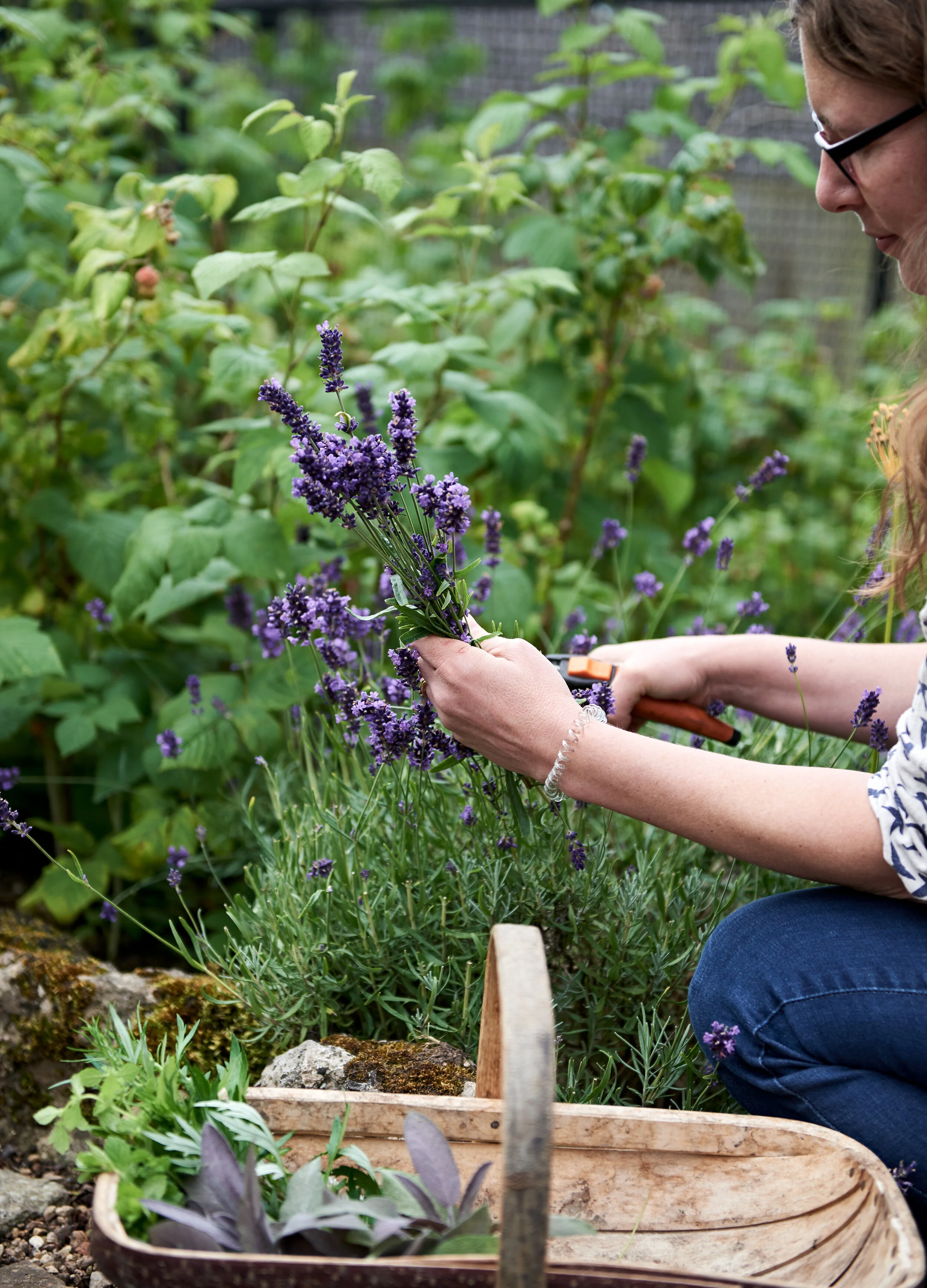Four thieves vinegar
Making herbal vinegars is a deeply satisfying process. But beyond that, they have been used therapeutically throughout the history of medicine-making because vinegar is a good living solvent and extracts many herbal constituents effectively.
Mostly, I use apple cider vinegar as that, in itself, is rich in nutrients. But I sometimes use kombucha vinegar too, which also contains beneficial nutrients.
Legend has it that four thieves vinegar protected four French thieves (working in the Marseille area) from catching the plague, despite their “career” choice necessarily involving popping in and out of the houses of plague victims. I don’t think this constitutes sound clinical evidence, but the herbs in this recipe all contain potent antimicrobial compounds that have been shown to interfere with various viruses and problematic bacteria in different ways. I always make my vinegars with fresh herbs, where possible.
When we drink it, we are consuming all those plant constituents and we are consuming the live microbes contained in the apple cider (or kombucha) vinegar at the same time. I do not recommend you guzzle it daily (vinegar-based drinks if consumed too frequently can damage your tooth enamel). We only have it, diluted in a little water or mixed into warming winter drink if we feel under the weather, in the same way we use the respiratory focus vinegar and our vital tonic. But we also enjoy it with food; on our eggs or over our vegetables or in a vinaigrette.
Have a go at making it yourself. This is the recipe I use, but you will find variations online and you should feel free to tweak this recipe if you fancy to. Some I have seen, contain hyssop (Hyssopus officinalis) which is herb with a long history of treating respiratory infections. Thyme would be another great one to add. You can, of course, just buy your apple cider vinegar and skip straight to phase 2 of the recipe if you wish. Or use kombucha vinegar!
Phase one – apple scrap vinegar
Ingredients
4 apples
1 litre of water
Ideally filtered4 tbsp of sugar
Some prefer to use the equivalent of local raw honeyA small amount of raw apple cider vinegar
Equipment
1.5 litre Kilner jar
Washed in hot water or that has been through the dishwasherA large jug or mixing bowl
A clean cloth and elastic band
A mixing spoon
Method
Simply put the water into the mixing bowl or jug and stir in the sugar (or honey if you have chosen to use that) until dissolved.
Chop up the apples into smallish chunks (I leave skins on and throw everything in – core and pips too) and put into the kilner jar – it should be ¾ full.
Pour over the sugar/honey water.
Close the lid to exclude oxygen and leave for around 2 weeks. I always label my ferments – saying what it is and when it was made. I also write on the date I next need to do something with it, so that I don’t forget.
After two weeks or so, strain the fluid from the apple and you will likely have an alcoholic cider. Put this cider into a clean kilner.
Add a small slosh of a previous batch of apple cider vinegar or some shop-bought raw, unpasteurised apple cider vinegar. This is not crucial, but it helps the process along by introducing the acetobacter bacteria you desire. I sometimes use kombucha vinegar or water kefir vinegar to do this if I have some of that about instead.
Cover, this time just with a cloth and elastic band, allowing air to the mix for this phase (acetobacter work in the presence of oxygen). And make a note on your label to check again in around 4-8 weeks.
I stop the ferment process when I am happy with its taste – I like it tangy and bright – which can take 12 weeks from apple removal in my house. If you are really lucky, a beautiful vinegar scoby will have formed and you can transfer this onto your next batch of vinegar.
This method produces apple scrap vinegar as a base for your four thieves vinegar. Apple scrap vinegar is slightly different to apple cider vinegar but for small batches, apple scrap vinegar works well!
Phase two – four thieves vinegar
Ingredients
1 litre of the delicious apple scrap vinegar you just made (or the apple cider vinegar you just bought)
Rosemary
Chopped (woody stalks removed)Sage
Leaves, choppedGarlic
6 cloves, mincedLavender
FlowersMint
Leaves and stalks, choppedCinnamon
1 or two dried sticks (whole)
Equipment
1.5 litre kilner jar
Sieve
Method
Chop the above and place in the clean kilner jar. Cover with the apple scrap vinegar, shut the lid and leave at room temperature for a month. Don’t forget to label it and date it. Note the ingredients on the label too, so you remember for next time. I also add the date on which I next need to do something with it.
Ideally, you would give it a shake daily, but I often forget this. Just do it when you remember.
When the month is up, strain off the liquid using a fine-mesh sieve. I also use a small press to press all the herbs. so that I extract as much of the juices as humanly possible from the herbs. Then bottle your four thieves vinegar in an airtight bottle, label it and I store it in the fridge door so the children can get some for themselves whenever they need it.
I have not given you specific measurements of each herb. Ideally, you would use approximately equal amounts of each and ensure that your vinegar is thick with submerged herbs by the end of the process. You will get to know how much this is by eye.

